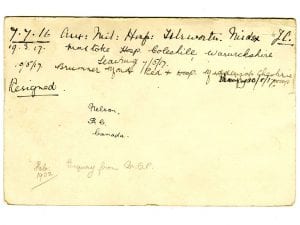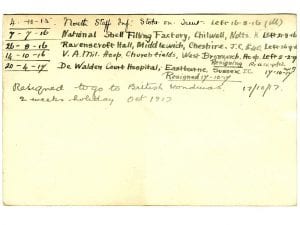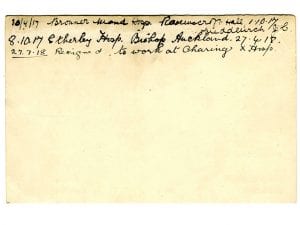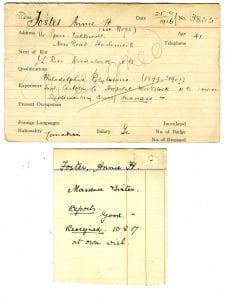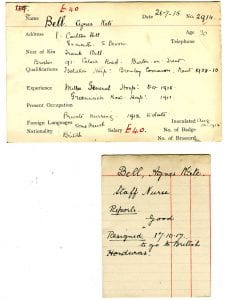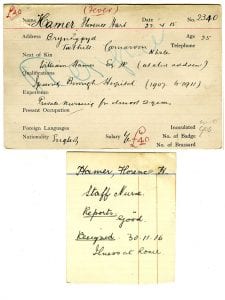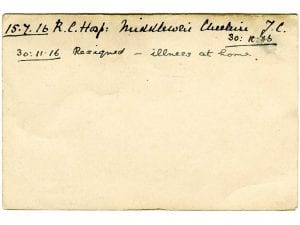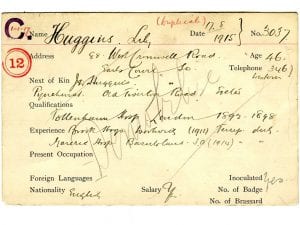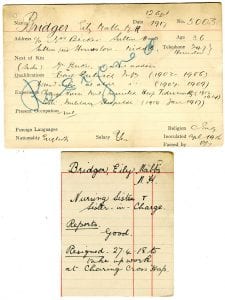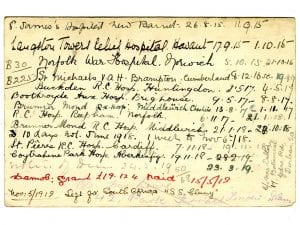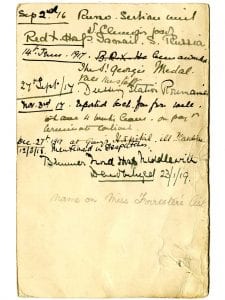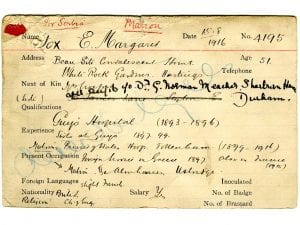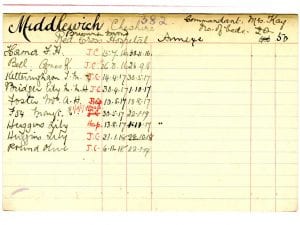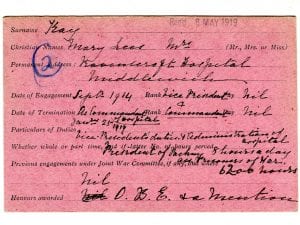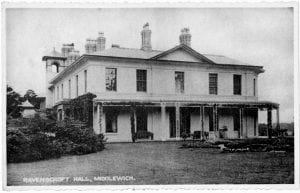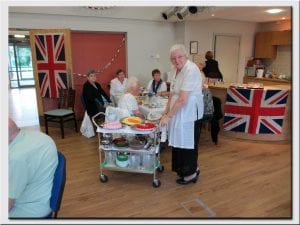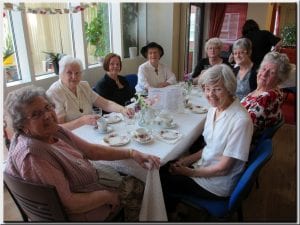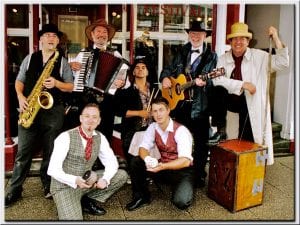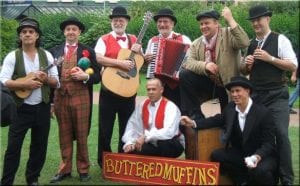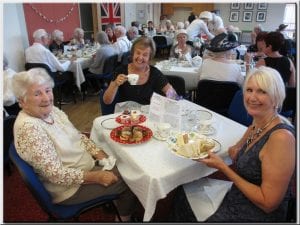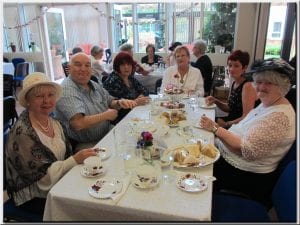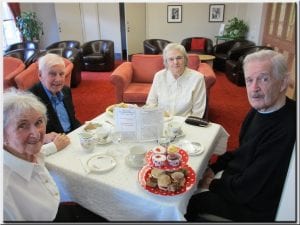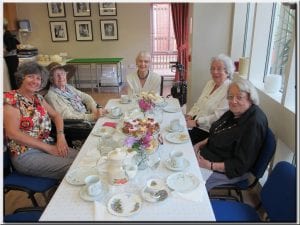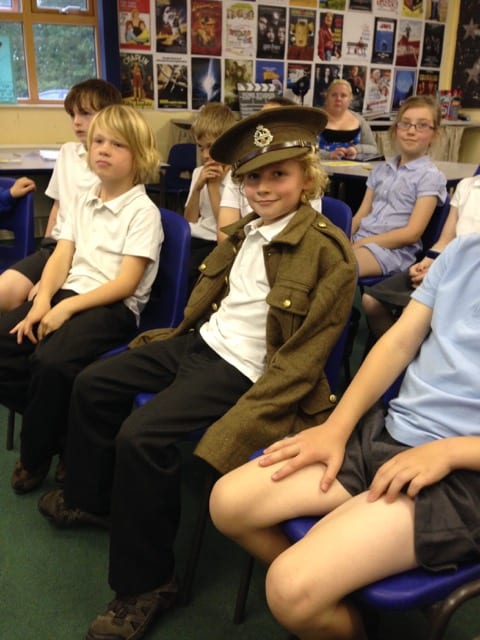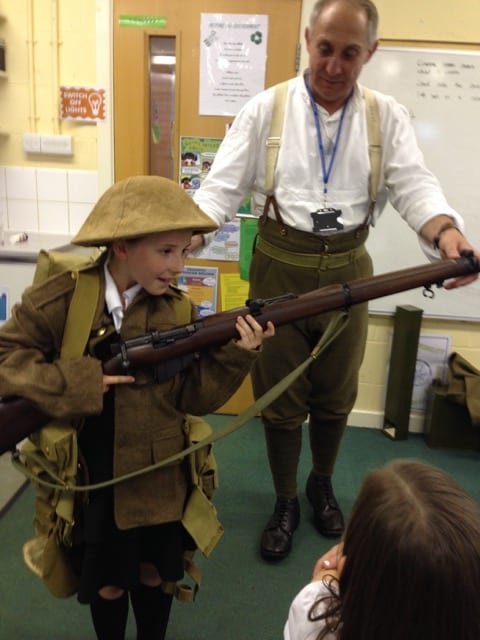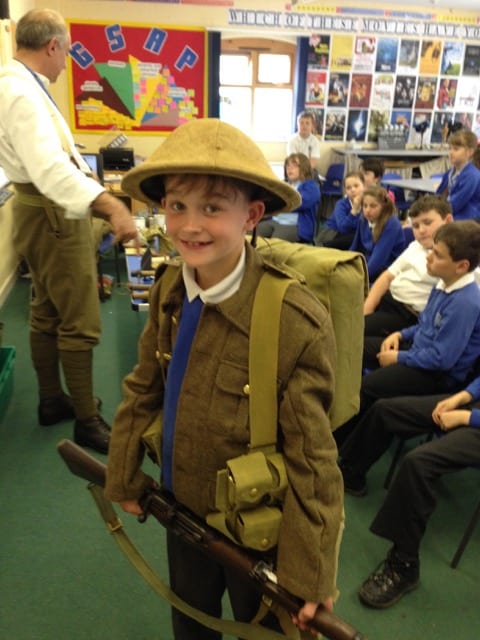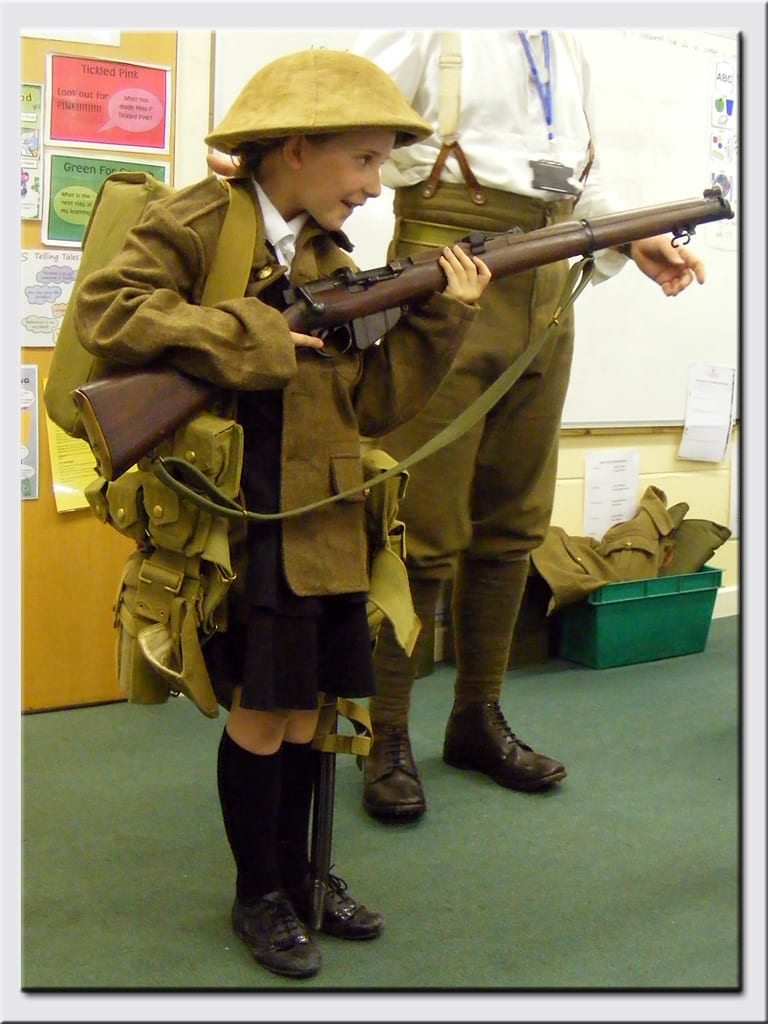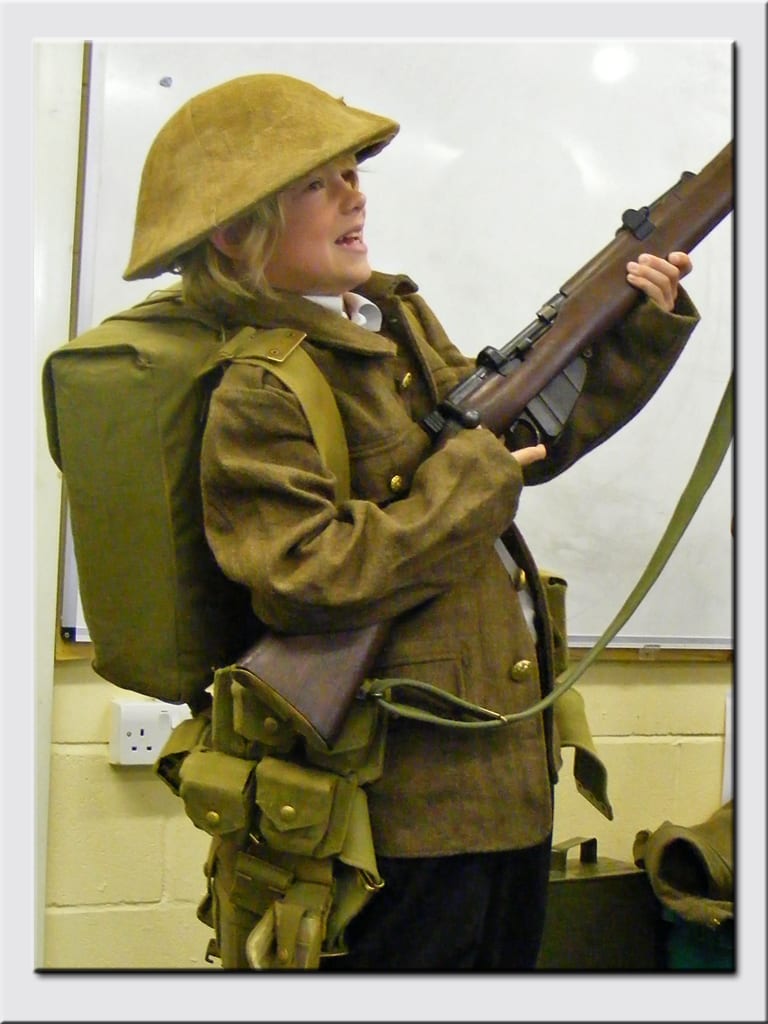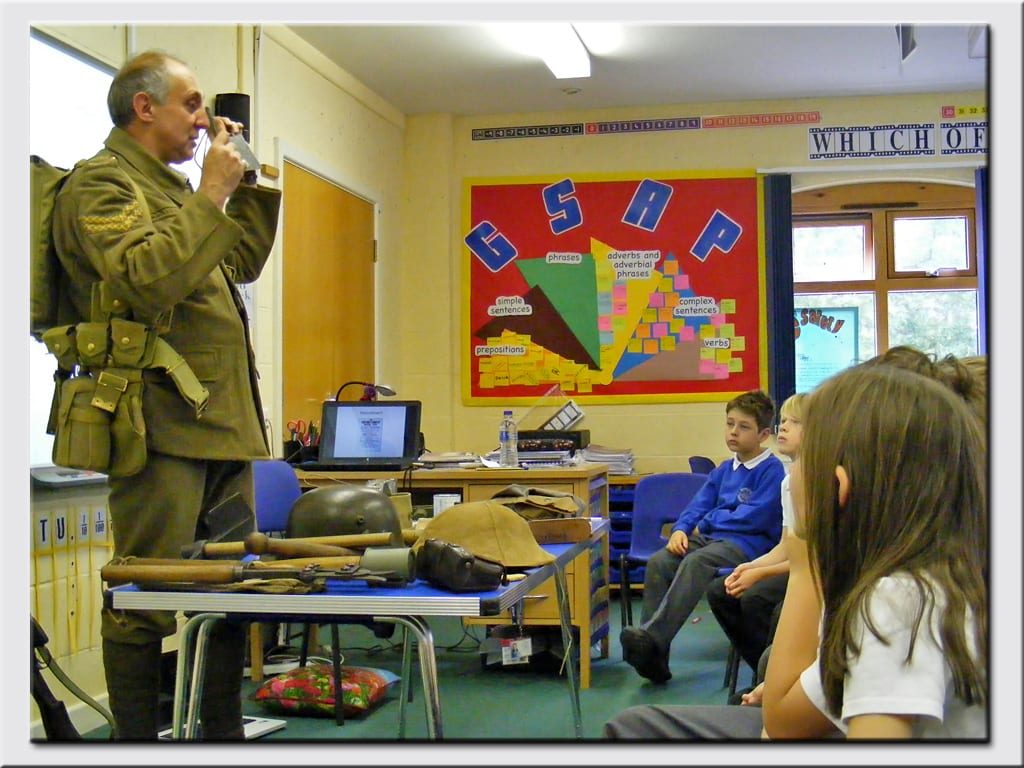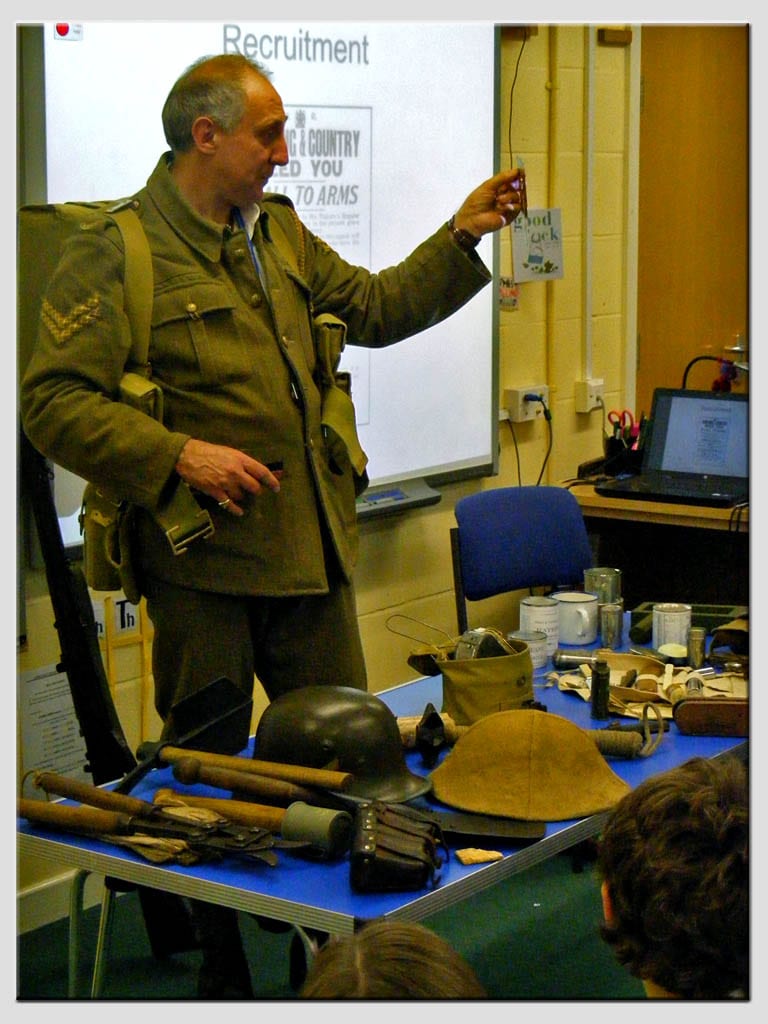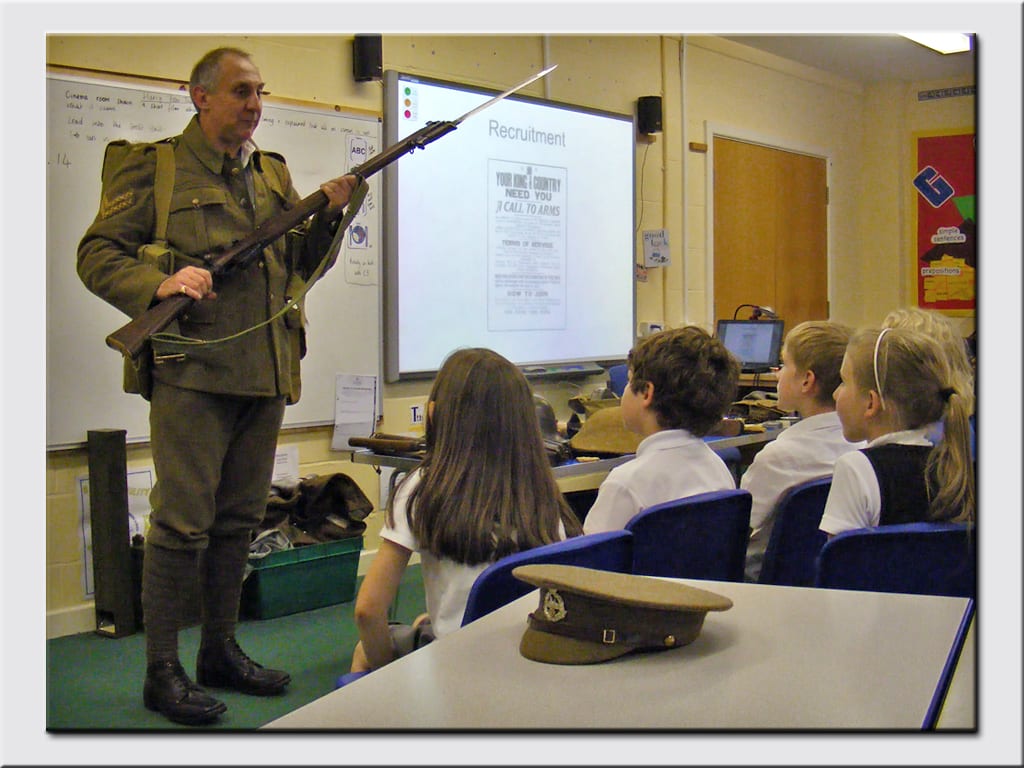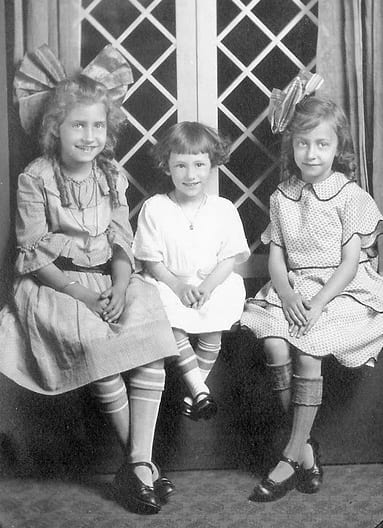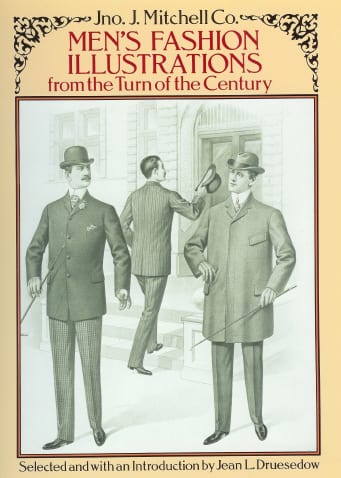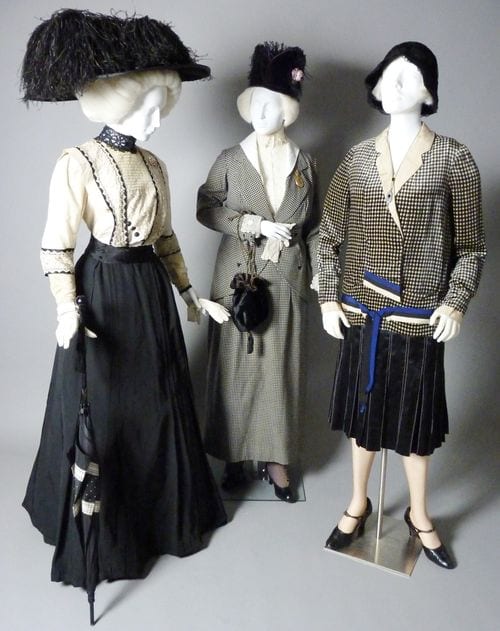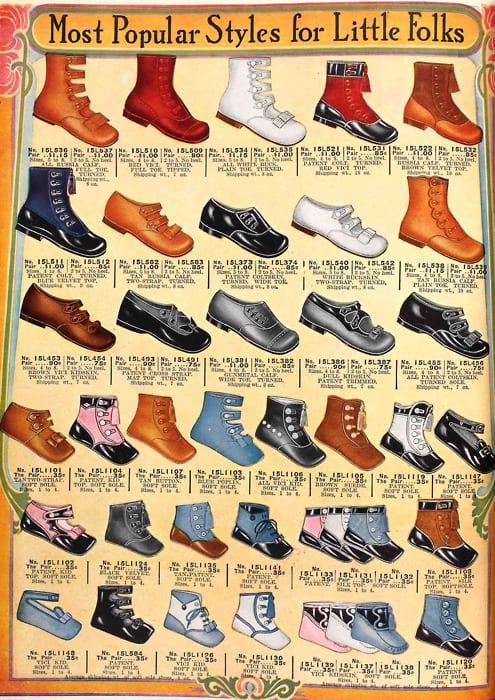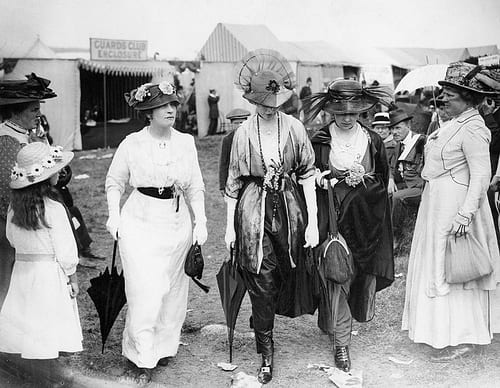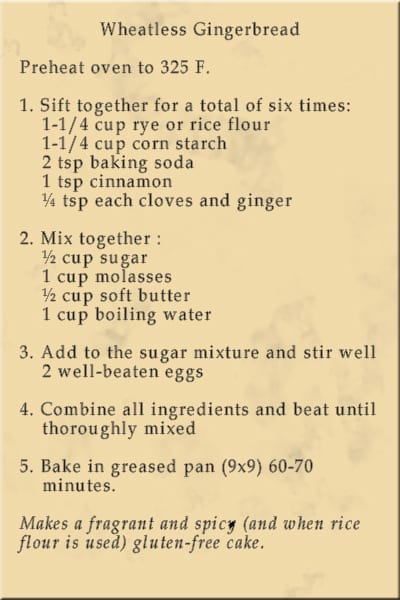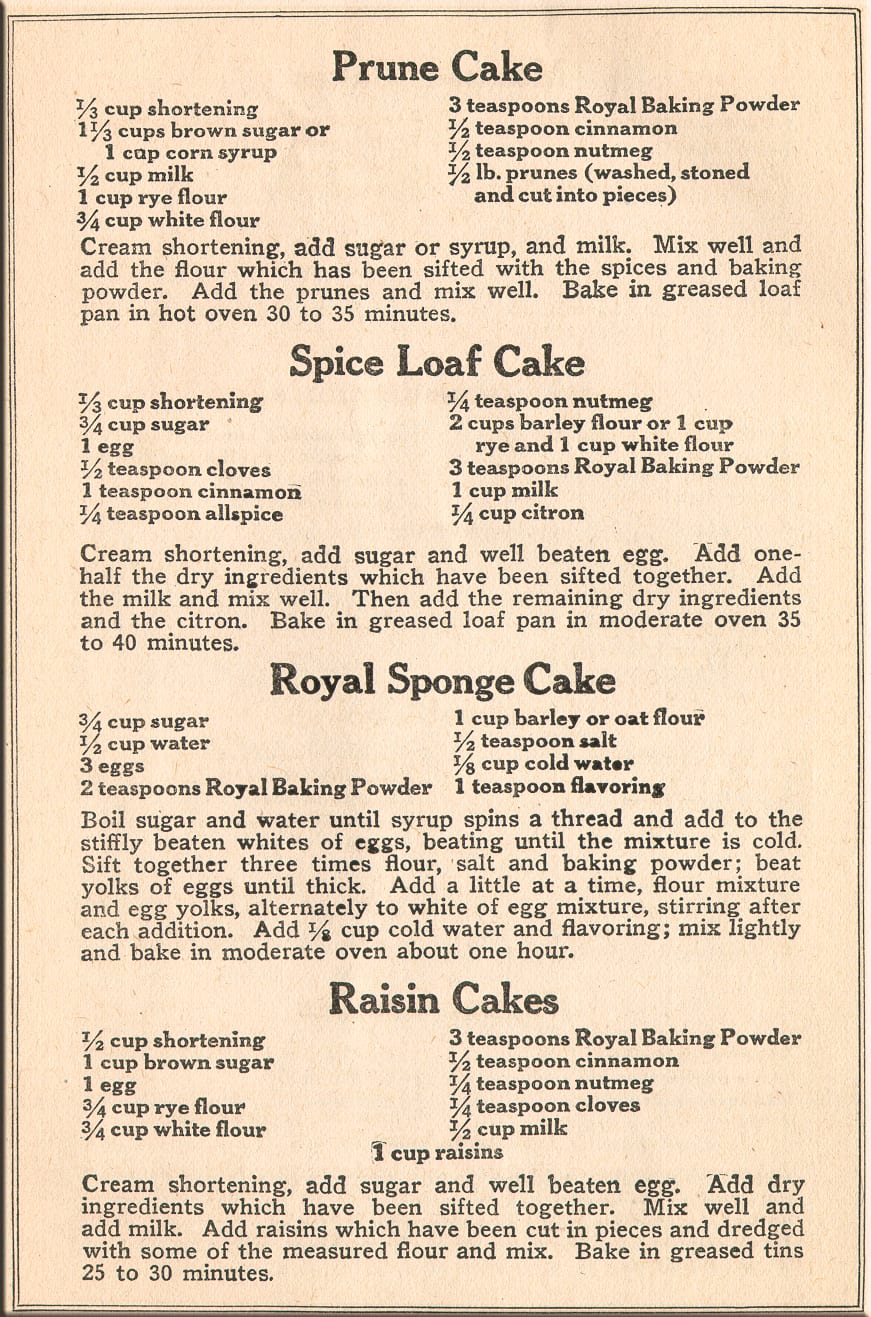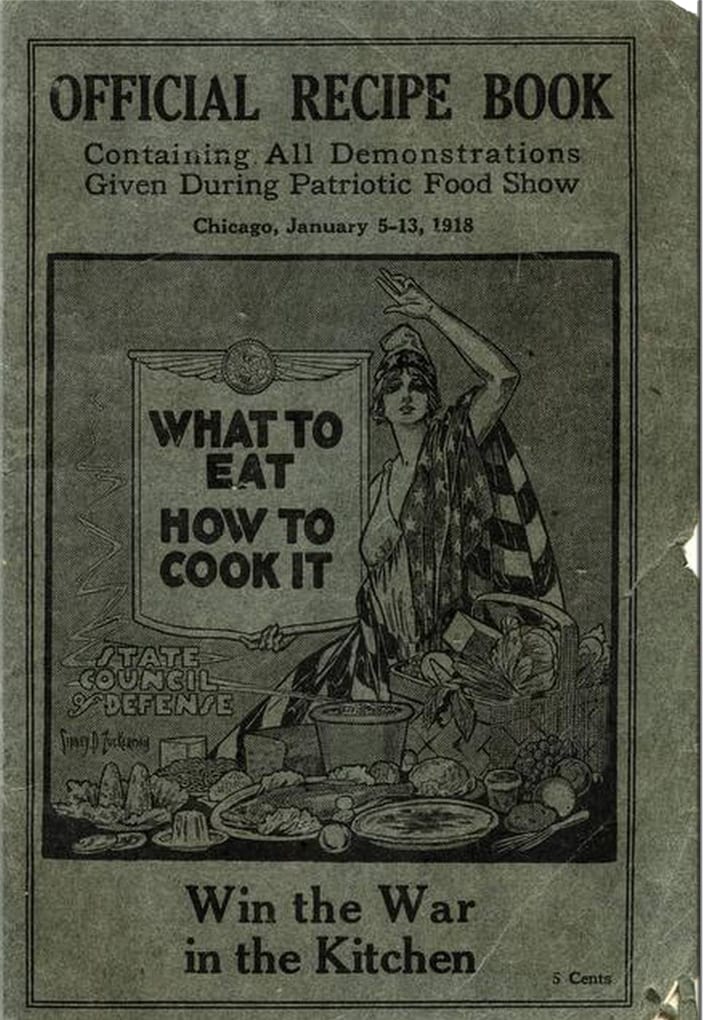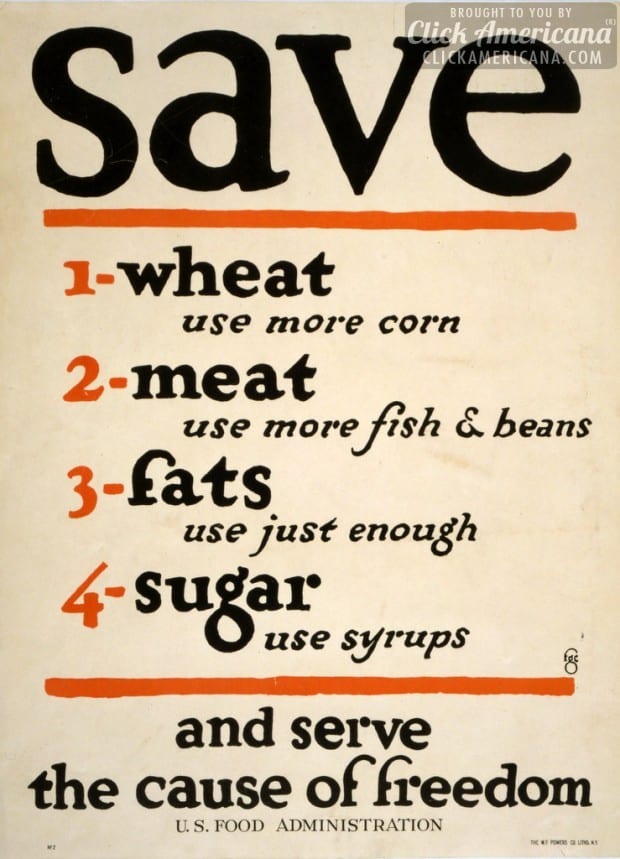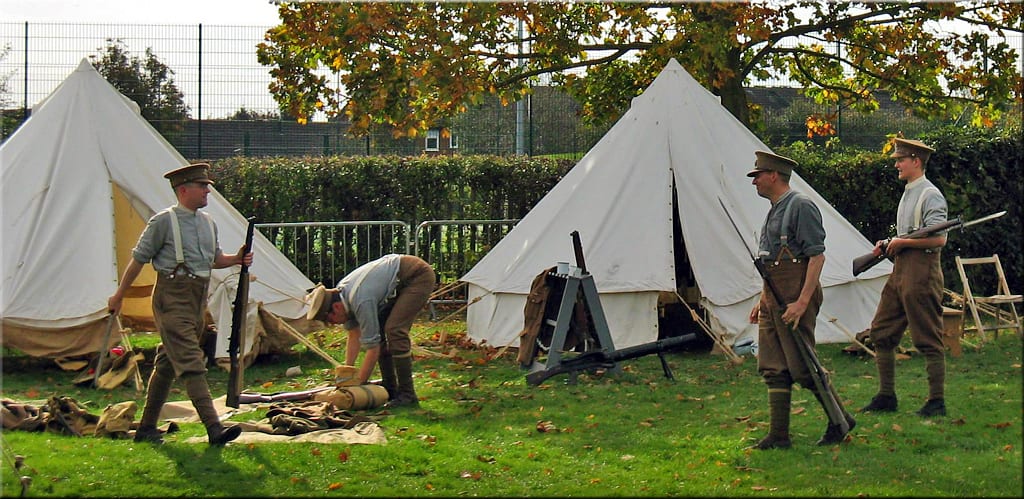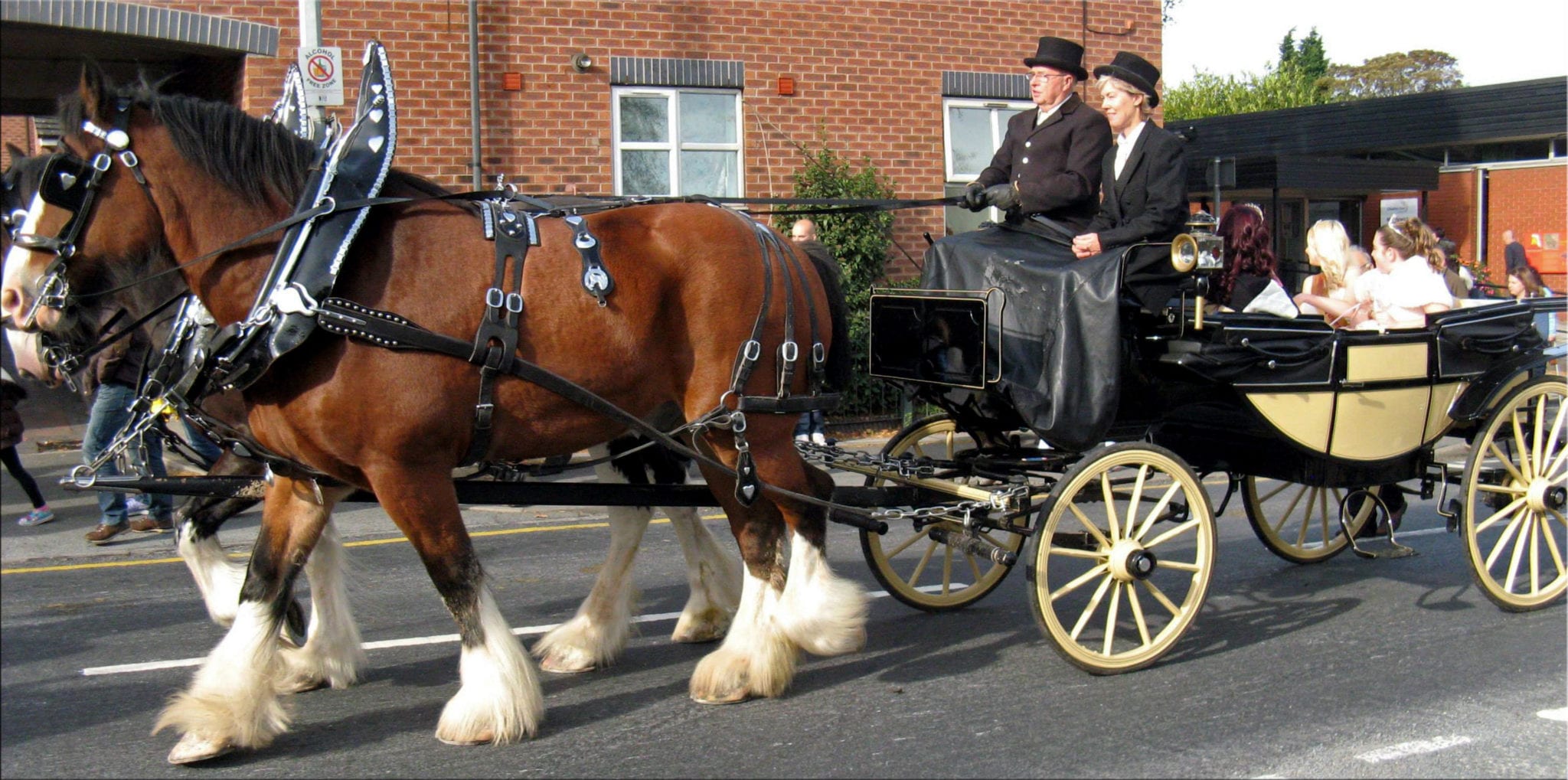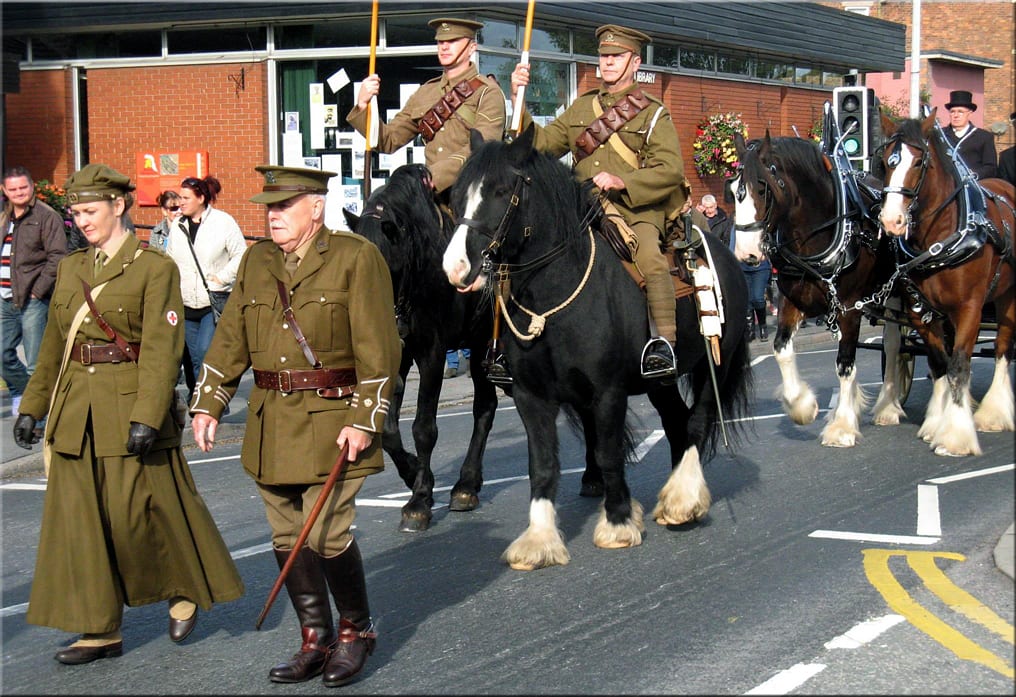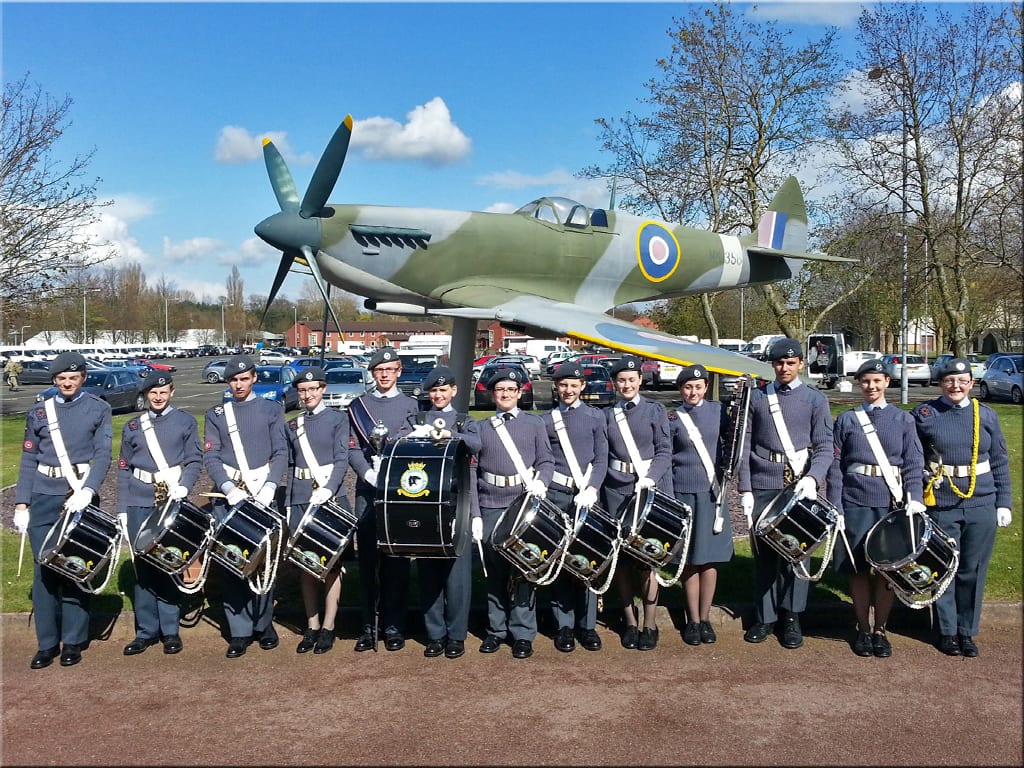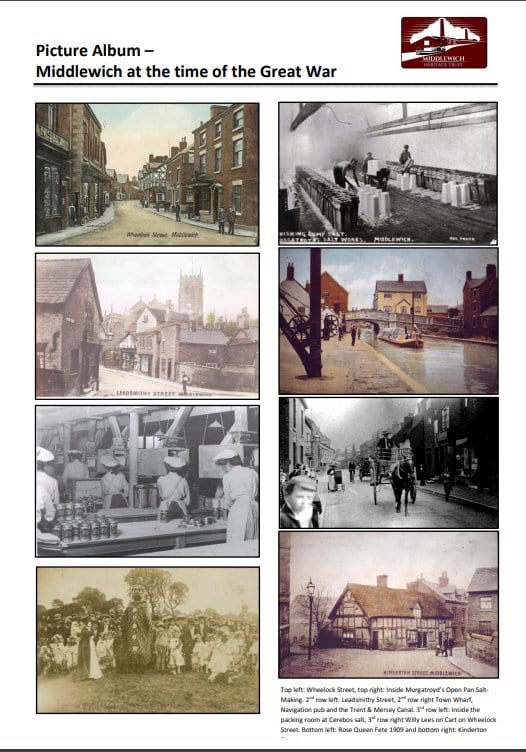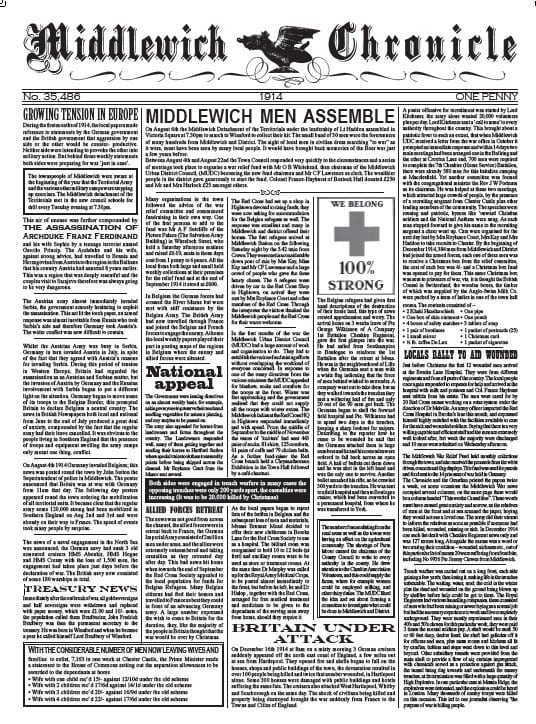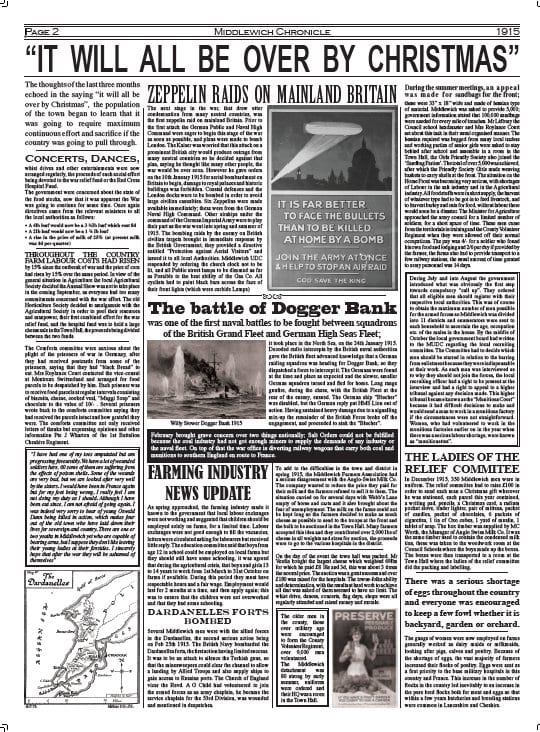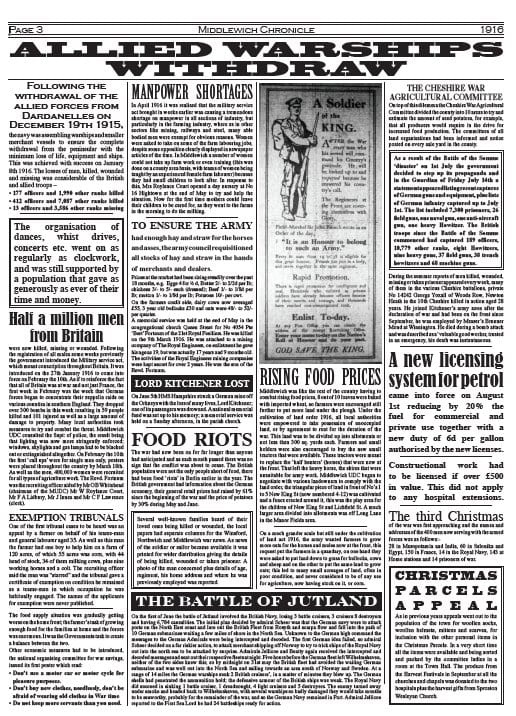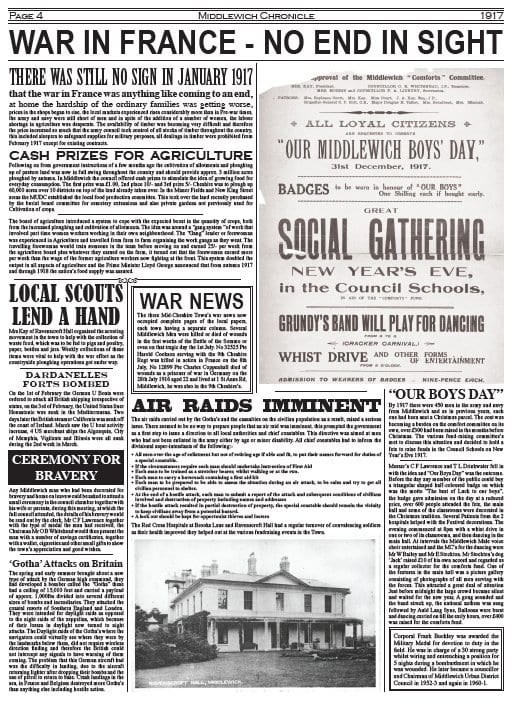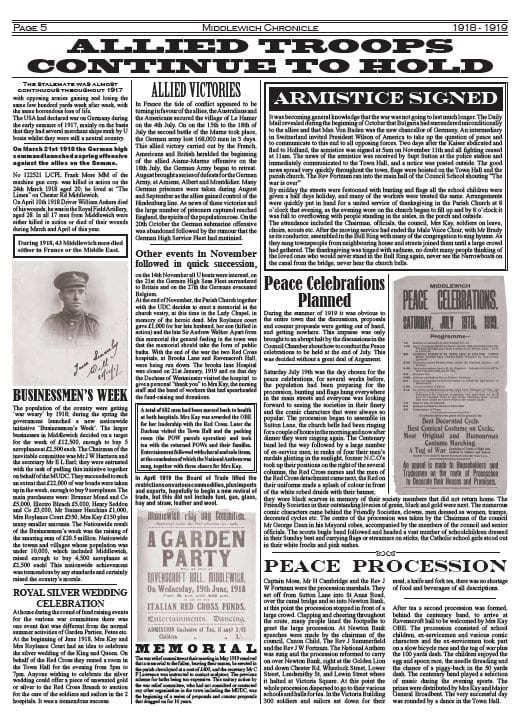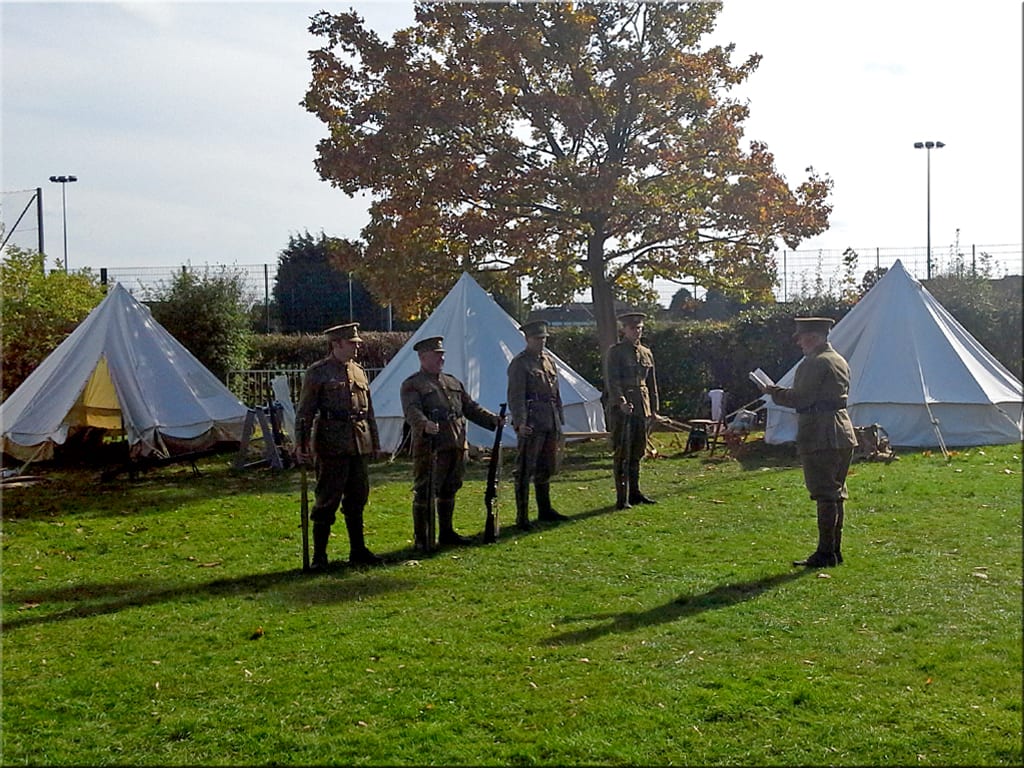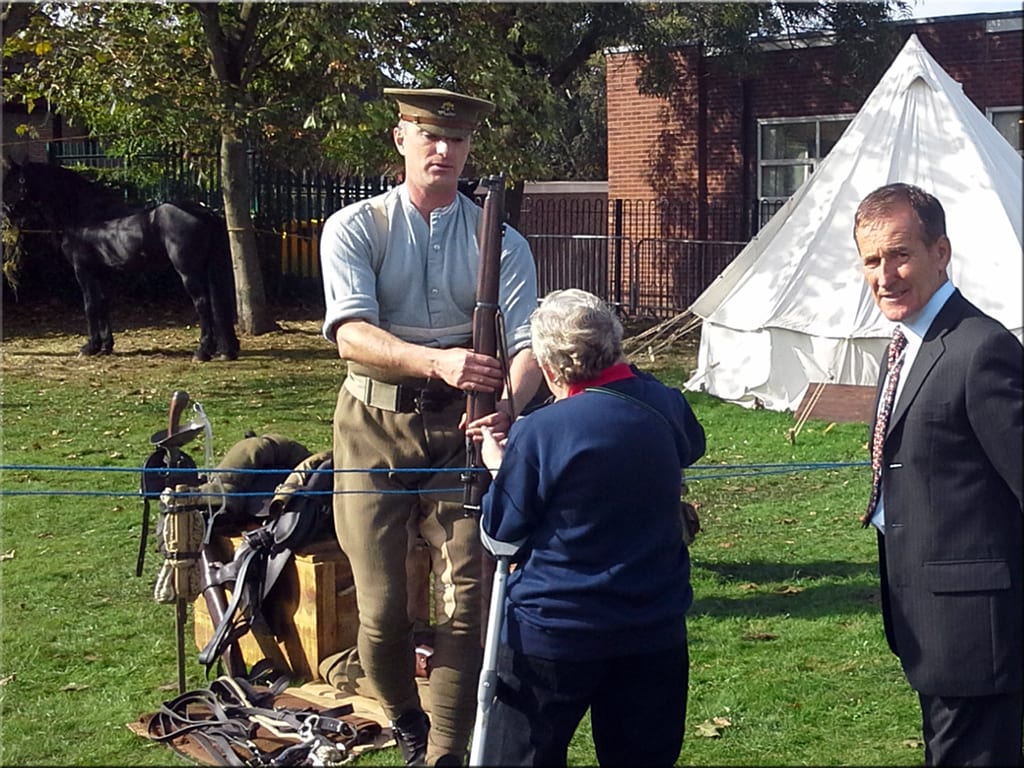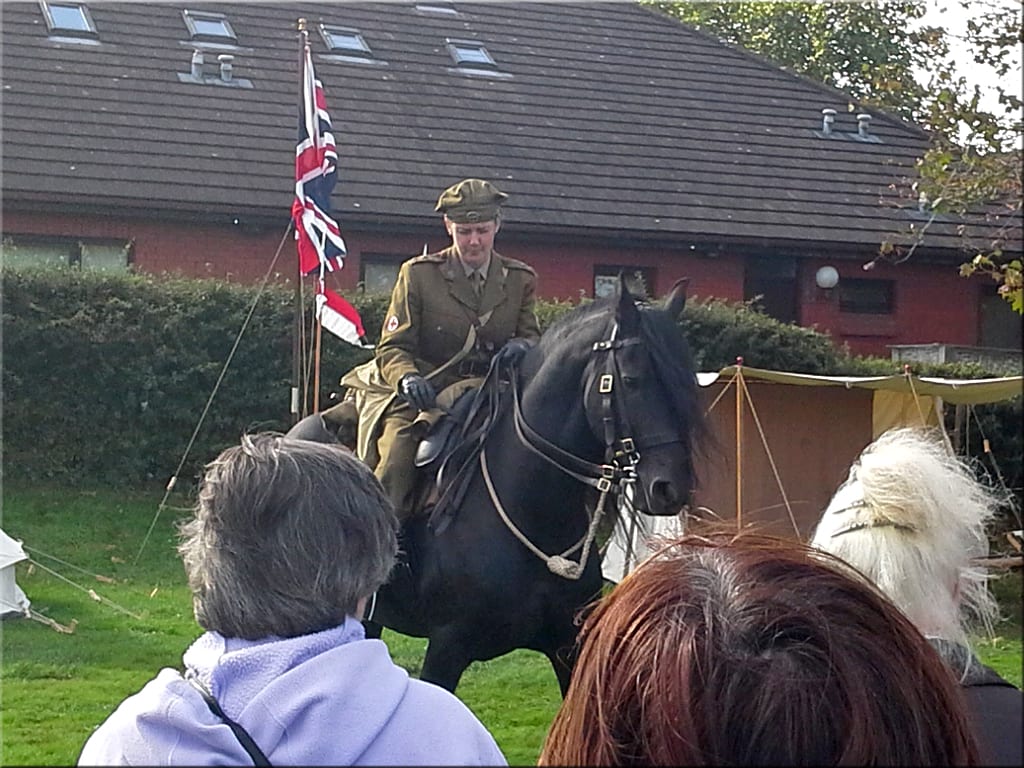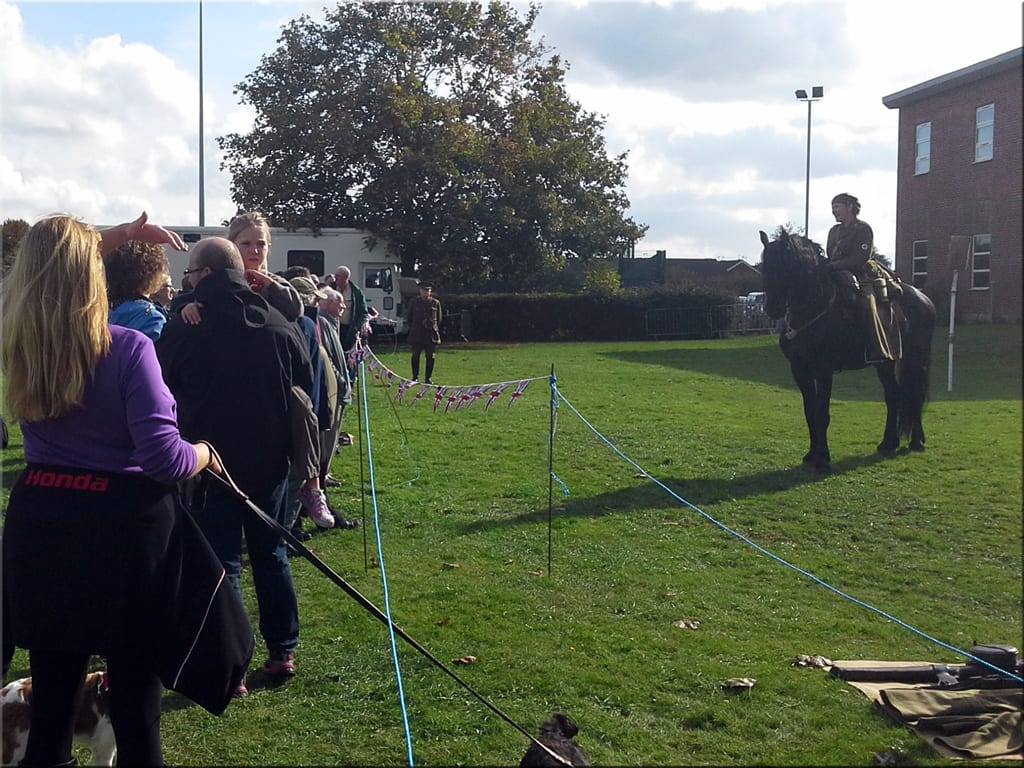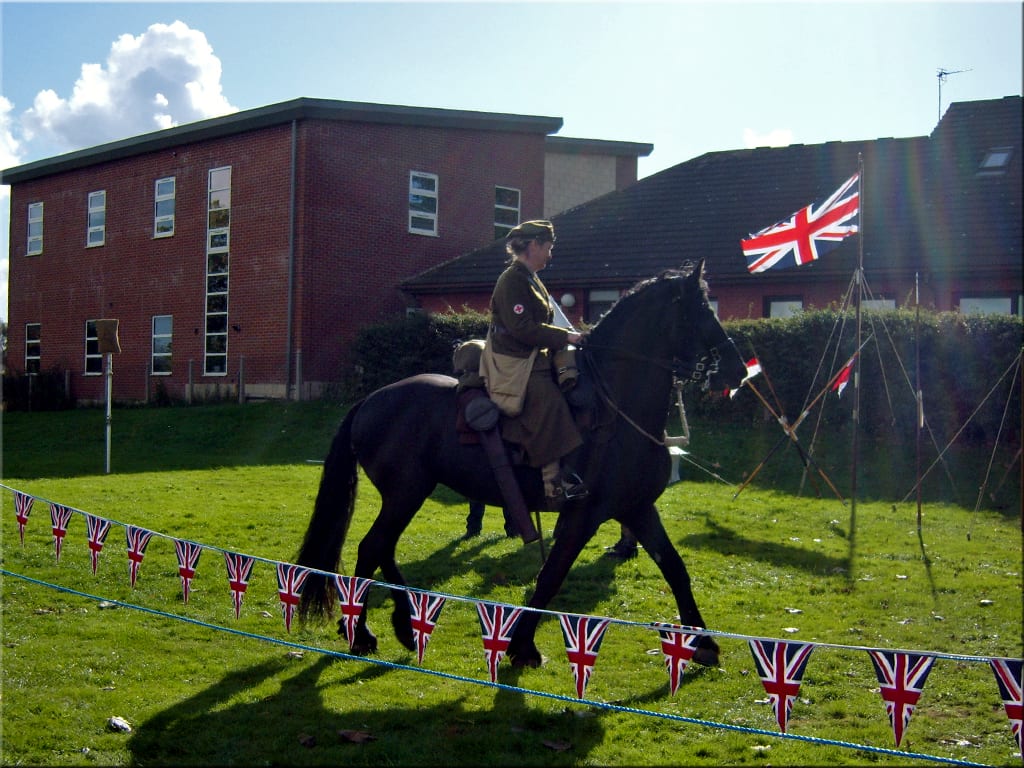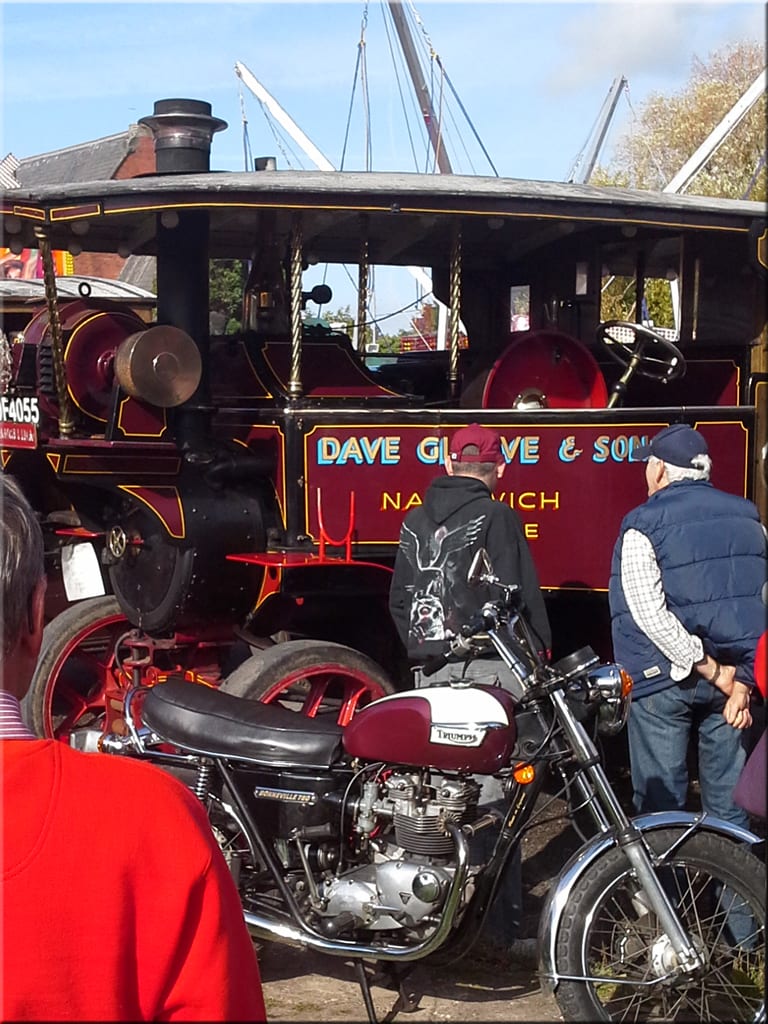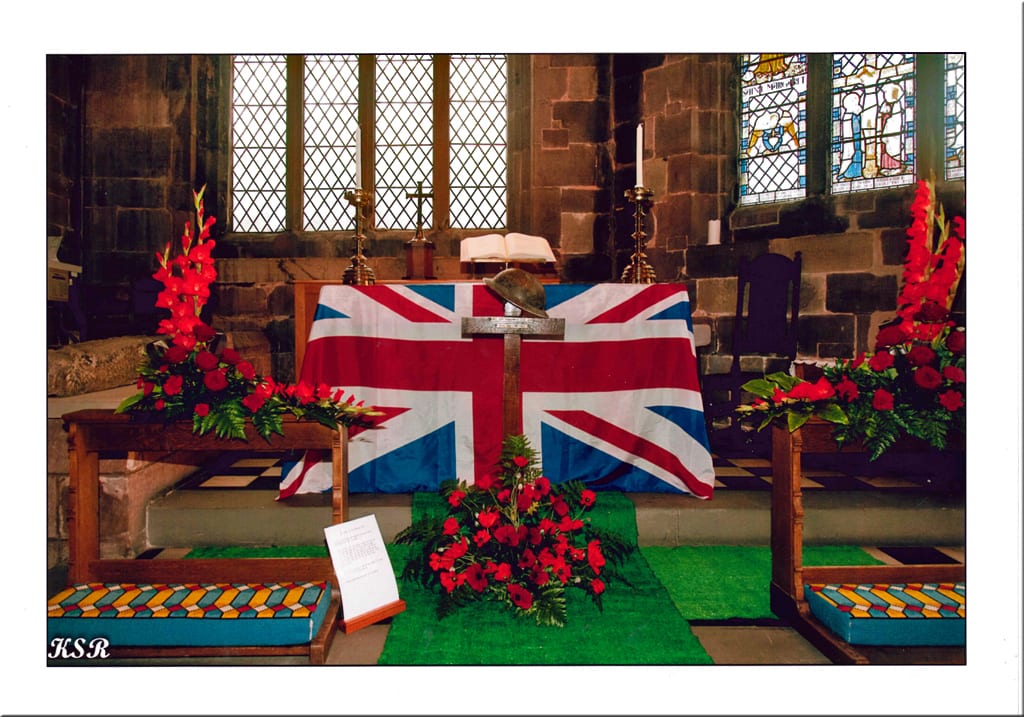MIDDLEWICH AND THE GREAT WAR
100 years on this project not only remembers those who fought and worked so hard for victory and peace in the “war to end all wars” but also looks to the impact that this era made such as the role of women in society, medical advancements and scientific discoveries to name a few. This project is intended to provide a reference for all who wish to know more about the Great War.
This Great Was Project will continue to collect information over the next four years. We are keen to know about Middlewich people serving in WWI and also wish to hear about today’s residents and families.
2018 CENTENARY COMMEMORATION
AFFECTED BY WAR
This project is collaboration between Cheshire East and Older People, Middlewich Town Council and the Middlewich Royal British Legion. The project was largely funded by Cheshire East Council with further funding from the Heritage Lottery Fund and Middlewich Town Council. Although this section looks at the affect of Great War as a whole it may help to appreciate why so many people were affected if we consider one of most well known battles of war:
Somme July 1st 1916
The battle of the Somme must rank as the most disastrous in the history of the British Army, the 1st of July 1916 was the day that turned no man’s land into a scene of indescribable horror and carnage.
There were 3 major faults in the British strategy to overwhelm the German forces. Firstly, a continuous bombardment of the German lines for 7 days prior to 1st July was designed to destroy the ranks of barbed wire trenches and to inflict as many losses as possible. It did neither. The wire remained intact and the German troops simply went deeper underground. Secondly, the British generals assumed that the Germans were unaware of the allied plan, in spite of the fact that over 1.5 million shells had been dropped on the German Lines followed by a series of mines being detonated totalling 30 tons of dynamite. The blowing of whistles meant that a frontal infantry attack was imminent, the several minutes gap between the shelling ceasing and the British soldiers advancing gave the German machine gunners time to scramble out of their bunkers and wait for British troops to try and get through the barbed wire. The troops had added difficulty with ground conditions after shelling and each man was carrying with him a lot of equipment. The British attacked in large numbers, they were cut down by continuous machine gun fire in a short time. No man’s land became an area of the dead, dying, partially and seriously wounded men. It was impossible to rescue them during the day, and the wounded men that could move raised their rifles in the air, this was seen by the German snipers and they began to pick them off at will. 57,470 British soldiers died on 1st July 1916 alone.
The Battle of the Somme continued until 18th Nov by which time both sides had lost a combined total of 1 million including 300,000 killed. Of the British Troops, 72,000 including our allies were lost without trace and commemorated on the Theipual memorial. The saying that “War is for the purpose of killing people” was certainly achieved from 1st July to 18th November 1916.
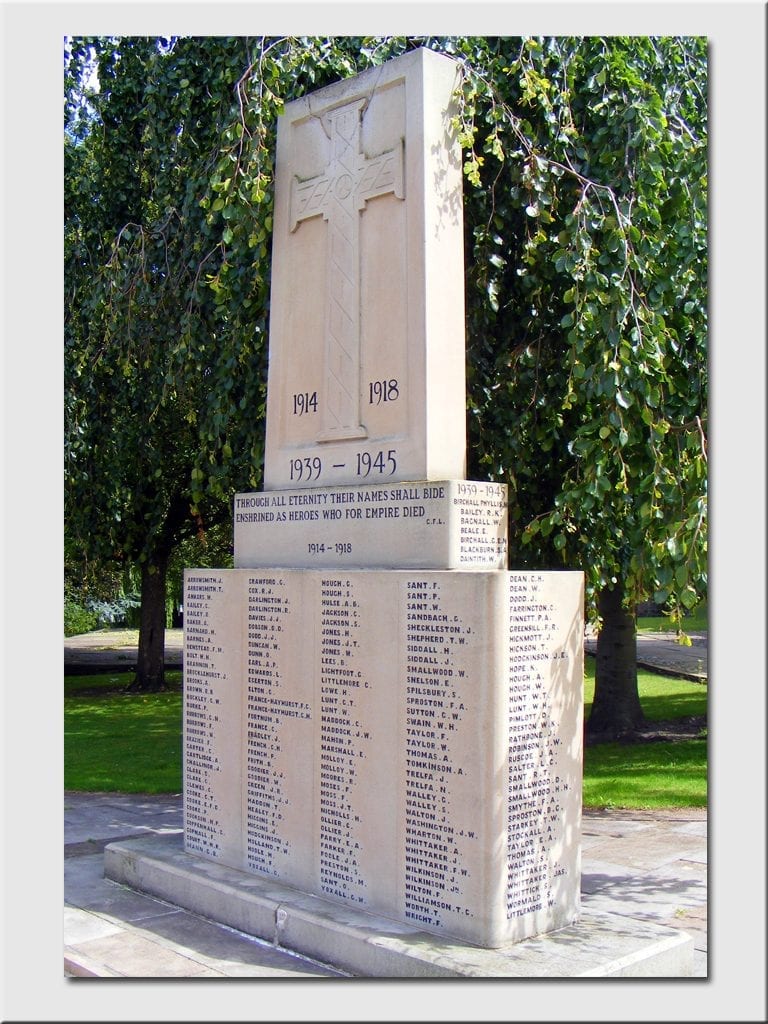
PEOPLE OF MIDDLEWICH
This list is not just the fallen but also those who were prisoner’s of war, or on the honours list and the roll of serving men from Middlewich.
Cover tributes:
“I congratulate Middlewich on it’s substantial contribution to Military Forces”,
Lord Kitchener, F.M.
God grant us through all times such souls as these,
Who know no fear, who seek no meed of praise.
E.H. Fernie, Chaplain, Australian Forces (formerly of Middlewich Parish Church)
What has Britain done?
On every front the flag unfurled,
Fought a world-war round the world.
F.B. Hodgins, New York Herald.
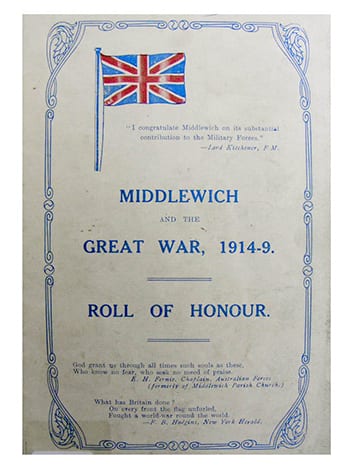
BRITISH RED CROSS
This section is what we know so far about the Middlewich Branch of the British Red Cross. This section includes the British Red Cross Information on the standard set up of hospitals during WWI, images of the British Red Cross service records of some of the staff that worked at the Brooks Lane Hospital. We have also gathered local information on what we know about the activities of the Middlewich Branch.
No photographs have been found at present of the ICI clubhouse being used as a hospital, but a photograph does appear with ICI staff pictured outside their new clubhouse. If anyone has any further information we would like to hear from you…
With thanks to : British Red Cross Society
HOSPITALS IN THE FIRST WORLD WAR
Taken from the book, Middlewich 1900-1950 by Allan Earl.
The Middlewich Branch of the Red Cross Society was behind many events raising funds local, initially helping to raise funds for Belgian refuges in 1914. A shop opened in Middlewich, Hightown under the guidance of Mrs Kay of Ravenscroft Hall. Teams of knitters were engaged for helping soldiers overseas, as well as fundraising exhibitions, events, competitions and coffee evenings. When Brunner Mond offered the new clubhouse in Brooks Lane for the Red Cross Society to use as a hospital, attentions turned to raising much needed funds to run it.
‘The billiard room was reorganised to hold 10- 12 beds and ancillary rooms were to be used as store rooms or treatment and the storage of equipment. At the same time Dr Murphy was called up for the RAMC, to be posted almost immediately to the front. However before he left, he and Dr Hislop (who at this stage remained in Middlewich), together with the Red Cross, arranged for free medical treatment and free medicine to be given to the dependants of the soldiers and sailors away from home should they require it.
Just before Christmas 1914 the first 12 wounded men arrived at the Brooks Lane Hospital. They were from different regiments and from all parts of the country. The local people once again responded to requests for help and arrived at the hospital with milk and potatoes and Col. France Hayhurst sent rabbits from the estate. The men were cared for by 20 Red Cross nurses working on a rota system under the direction of Dr Melville’. (Page 78)
Concerts, dances and whist drives were arranged regularly, the entire proceeds being devoted to the War Relief Fund or the Red Cross Hospital Fund.
The local farmers, who were during this time in a milk dispute with Anglo-Swiss, decided to make the milk into cheese and have a cheese fair to raise funds for the hospital, which totalled £180.
By 1916, two hospitals were supported by fundraisers in Middlewich, Brooks Lane and Ravenscroft Hall which was used for convalesce. It was reported that the Harvest Festival produce was donated to the hospitals plus profits from events.
In August 1917 a croquet tournament was held at Ravenscroft Hall with several convalescing Soldiers taking part.
Records also show that a fete was held in the Council School on New Year’s Eve 1917, 6-700 people attended with the main hall and some of the classrooms had a very festive appearance. The plants decorating the rooms were lent by Mr Boosey. Several patients from the Red Cross Hospital helped in the decoration.
‘Brooks Lane Hospital was closed on January 21st 1919, the Duchess of Westminster visited the hospital to give a personal ‘thank you’ to Mrs Kay, the nursing staff and the band of workers that had spearheaded the fundraising and donations.
682 men had been nursed back to health at both hospitals. Mrs Kay was awarded the OBE for her leadership and work with the Red Cross in Middlewich’. (Page 101)
Permission of use of material is for the purpose of helping to produce a book on hospitals in the First World War and is not to be used for any other purpose.
BRITISH RED CROSS ACTIVITY DURING THE FIRST WORLD WAR
Following the outbreak of war in August 1914, the British Red Cross formed the Joint War Committee with the Order of St John to pool fundraising activity and resources and work together under the protective emblem of the Red Cross.
Members of the British Red Cross and the Order of St John were organised into Voluntary Aid Detachments. The term VAD was also used for an individual member as well as a detachment. All members were trained in first aid and some undertook training in nursing, cookery and hygiene and sanitation.
Throughout the war VADs worked in hospitals, convalescent homes, rest stations, packing centres, medical supply depots and work parties. The Joint War Committee organised the volunteers alongside technical and professional staff. It also supplied the machinery and mechanisms to provide these services in Britain and in the conflict areas of Europe, the Middle East, Russia and East Africa.
Voluntary Aid Detachments
Just before the declaration of war, the numbers of Voluntary Aid Detachments raised by the British Red Cross and the Order of St John and registered by the War Office were as follows:
| Detachments | Personnel | |||
| British Red Cross | St John | British Red Cross | St John | |
| Women | 1,582 | 241 | 40,018 | 6,773 |
| Men | 408 | 143 | 17,666 | 5,865 |
| Total | 1,990 | 384 | 57,714 | 12,638 |
By the time that the Armistice was called in 1918 these figures had increased significantly:
| Detachments | Personnel | |||
| British Red Cross | St John | British Red Cross | St John | |
| Women | 2,534 | 713 | 66,211 | 24,440 |
| Men | 560 | 276 | 24,712 | 10,630 |
| Total | 3,094 | 989 | 90,923 | 35,070 |
Auxiliary hospitals and convalescent homes
During the War the British Red Cross provided auxiliary hospitals and convalescent homes for wounded service men. During peacetime the British Red Cross had been preparing for this. It had already secured buildings, equipment and staff so that many temporary hospitals were available for use as soon as wounded men began to arrive from abroad.
Despite this preparation, on the outbreak of War both the Joint War Committee and the War Office were inundated with additional offers of buildings. It was the Committee’s job to sort through these 5000 offers to assess the suitability of the premises for use as temporary hospitals. The buildings on offer varied greatly including town halls, schools, large and small private houses, both in the country and in towns and cities. Those deemed suitable by the Commission were established as auxiliary hospitals. These were attached to Central Military Hospitals, which directed the movement of the patients, who remained under military control.
In all, there were over 3000 of these hospitals, which were administered under County Directors. They were usually staffed by:
> a Commandant, who was in charge of the hospital, except for medical and nursing services;
> a Quartermaster, who was responsible for the receipt, custody and issue of article in the provision store;
> a Matron, who directed the work of the nursing staff;
> members of the local Voluntary Aid Detachment, who were trained in first aid and home nursing.
In many cases ladies in the neighbourhood gave part-time service, although it was often necessary to supplement voluntary work by paid labour, such as in the case of cooks. Medical attendance was provided locally and was usually voluntary, despite the extra strain that the medical profession was already under at that time.
The patients at these hospitals were generally the less seriously wounded and those in need of convalescence. The servicemen preferred the auxiliary hospitals as the discipline was not as strict as in the Military Hospitals, conditions were less crowded and the surroundings more homely.
Transport for the wounded
The Joint War Committee was the first to supply motorised ambulances to the battlefields. The first convoy arrived in France in September 1914 and proved much more effective in the war terrain than the horse drawn ambulances used in previous conflicts.
The ‘Times Appeal’, issued on 2 October 1914, was instrumental in raising funds for the provision of ambulances. A successful response led to sufficient funds within 3 weeks to purchase 512 Ambulances. The Red Cross bought practically every chassis in the country that was suitable for the purpose.
There were additional appeals, the ‘Dennis-Bayley Fund’ and ‘Transport of Wounded Fund’ which helped maintain the upkeep of the vehicles and there were also a number of Cars presented as gifts to the Society.
Each ambulance carried on average 3939 cases and each driver on average 3000 cases. A total of 2500, both male and female, drivers served.
The UK Flour Millers’ Association presented the Red Cross with two ambulance trains, specially built and equipped, constructed by Great Western and Great Eastern Railways. The trains were working in France during 1915, with another train, converted from ordinary French rolling stock. The three trains carried 461,844 patients.
Work parties were set up by voluntary groups across the country to help supply hospitals with such items as bandages and clothing. Queen Mary’s Needlework Guild (QMNG) was one of many voluntary organisations founded at the start of the First World War to supply gifts and comforts to troops in the field and to sick and wounded soldiers in hospitals at home and abroad. These included pyjamas, bed-jackets, bed-socks, operation stockings, bags, bandages and dressings.
During the war the Queen Mary’s Needlework Guild worked as part of the War Hospitals Supply Depot providing bandages and other items for military hospitals. Work parties who worked as part of the Joint War Committee of the British Red Cross and Order of St John supplied similar items to auxiliary voluntary hospitals.
QMNG worked alongside work parties co-ordinated by the Joint War Committee of the British Red Cross and Order of St John and work parties co-ordinated by a special department of the War Office.
BRITISH RED CROSS VOLUNTARY AID SCHEME
1909 SCHEME FOR THE ORGANISATION OF VOLUNTARY AID IN ENGLAND AND WALES
As a result of the scheme, the Red Cross organised voluntary aid detachments (VADs), made up of men and women, in every county to carry out transport duties and staff rest stations and hospitals.
The Red Cross selected suitable buildings for general hospitals, prepared schedules of equipment for the hospitals and submitted schemes to establish auxiliary hospitals and convalescent homes for wounded servicemen.
Each county Branch appointed a county director to be in charge of raising detachments. All VAD members were to be trained in first aid and nursing through St John Ambulance Association. Volunteers were also trained to make use of local resources to improvise stretchers and other methods of transport, and to convert local buildings into shelters and rest stations for the sick and wounded. By October 1910, 202 detachments had been registered with over six thousand volunteers.
An amended scheme was published in December 1910, which gave county associations authority to employ other means of raising detachments, including registering with the St John Ambulance Brigade and St John Ambulance Association units. A few territorial force association detachments were also raised.
In March 1911, a sub-committee recommended uniforms which would readily distinguish the wearers as belonging to the Red Cross detachments, but which would not appear to be too military.
Membership of the Detachments grew still further on the outbreak of the First World War in 1914. The British Red Cross and the Order of St John, a body that was also empowered to raise detachments under the War Office Voluntary Aid Scheme, combined to form the Joint War Committee. This Committee administered the joint wartime fundraising and relief work with the greatest possible efficiency and economy, under the protection of the Red Cross emblem and name.
During the First World War the Joint War Committee administered over 3000 auxiliary convalescent hospitals in Britain staffed by local Voluntary Aid Detachments. As the war progressed and more men were called up for military service, female VADs took on new roles including ambulance drivers, cooks, clerical workers and telephonists.
A further revised scheme was issued in 1923. Detachments could again consist of men or women, but the service was to be of two kinds:
> mobile – where on mobilisation members would be expected to go wherever their services were needed
> immobile – where they would carry out their duties from their own homes.
The Voluntary Aid Detachments formed part of the Technical Reserve of the Forces of the Crown.
In addition, British Red Cross detachments were raised and trained to accommodate those wanted to help but who could not give the commitment required by membership of the Voluntary Aid Detachments. The Red Cross detachments were intended to provide and replenish the personnel of the Voluntary Aid Detachments, to supply a reserve in time of emergency and to carry out the duties of a National Red Cross Society.
VADs continued to be at the core of voluntary services until the reorganisation of the Red Cross in 1984.
AUXILIARY HOSPITALS DURING THE FIRST WORLD WAR
Following the outbreak of the First World War, the British Red Cross and the Order of St John of Jerusalem joined together to form the Joint War Committee to pool their resources of money and manpower with maximum economy and efficiency under the protection of the Red Cross emblem. As the British Red Cross had already secured buildings, equipment and staff, many temporary hospitals were largely available for use as soon as wounded men began to arrive from abroad.
Despite the pre-war preparation, on the outbreak of war both the Joint War Committee and the War Office were inundated with additional offers of buildings for accommodation. It was the Committee’s job to sort through these 5000 offers of premises to assess their suitability for use as a temporary hospital. The buildings on offer were varied and included anything from town halls and elementary schools to large and small private houses, both in the country and in towns and cities. Those deemed suitable by the were established as auxiliary hospitals. These were attached to Central Military Hospitals, which directed the movement of the patients, who remained under military control.
In total there were over 3000 of these auxiliary hospitals, which were administered under County Directors. They were usually staffed by: > a commandant, who was in charge of the hospital except for medical and nursing services > a quartermaster, who was responsible for the receipt, custody and issue of articles in the provision store
> a matron, who directed the work of the nursing staff
> members of the local Voluntary Aid Detachment, who were trained in first aid and home nursing. In many cases ladies in the neighbourhood gave part-time service, although it was often necessary to supplement voluntary work by paid labour, such as in the case of cooks. Medical attendance was provided locally and was usually voluntary, despite the extra strain that the medical profession was already under at that time. The patients at these hospitals were generally the less seriously wounded and those in need of convalescence. The servicemen preferred the auxiliary hospitals as the discipline was not as strict as in the Military Hospitals, conditions were less crowded and the surroundings more homely. It was partly their popularity and reputation for an excellent standard of care which, during the Second World War, was to lead to the extension of these convalescent services to include the provision of a broad range of rehabilitation therapies.
> Reports by the Joint War Committee and the Joint War Finance Committee of the British Red Cross Society and the Order of St John of Jerusalem in England on voluntary aid rendered to the sick and wounded at home and abroad and to British prisoners of war 1914-1919. This volume contains information about auxiliary hospitals and a list of hospitals by county in the appendices
> List of the various hospitals treating military cases in the United Kingdom. Entries are arranged under the different Military Command areas of the country and give the location and size of each establishment. Auxiliary hospitals are included, together with military and civil hospitals. The affiliation between central and auxiliary hospitals is shown on this list.
> Accounts of the work of some hospitals were published at the time in the annual reports of county branches of the British Red Cross.
> Reports covering the work undertaken were compiled and produced at the end of the war by the following counties: Berkshire; Cambridgeshire; Cumberland and Westmorland; Devon; Gloucestershire; North East and East Lancashire; Glamorgan; Hampshire; Kent; London; Monmouthshire; Norfolk; Shropshire; Sussex; East of Scotland. They give descriptions of the work of the local hospitals, often with photographs of the buildings and staff. Some have lists of the VAD staff. > The County Branches: their organization and work during the first months of the war, volume I. This book contains brief accounts of the early work of auxiliary hospitals in Bedfordshire, Berkshire, Birmingham, Bristol, Buckinghamshire, Cambridgeshire, Cheshire, Cornwall, Derbyshire, Devonshire, Dorset, Durham, Essex and Gloucestershire. Unfortunately the projected second volume of this work did not appear.
EVENT PREPARATION
Prior to the Middlewich Town Council Great War heritage event on the 4th and 5th October 2014 we challenged the Middlewich community to think of acts of commemoration of the Great War and its era through research, workshops and networking. Documents such as the Roll of Honour, minute books of the schools, MUDC documents, papers relating to families, newspapers and war records of the Red Cross have been utilised. Middlewich Schools, community groups, churches and residents alike to explored and researched this important era and brought it all together for the event.
This section looks at the research and many of event preparations that took place. The Project was launched in October 2013 at Middlewich High School and featured:
- The mayors Speech
- The HLF Successful bid – press release
- The Project breakdown – chart
- Followed by publicity material
Publicity
Community
Song & Poems
Charlotte Peters – Rock, a Cheshire poet-performer and songwriter- singer, produced songs and poems based on her research both locally and nationally. Charlotte attended some previous events to get inspiration for her work, which is not only written but performed. Here are some examples of her work.
We look back now along the years
To where the century is met
And see – we think we understand
The hope – the loss – the grief – the tears
But we don’t understand it yet
We find the photographs we kept
When granddad or great-granddad died
We look – and think we understand
The bleakness where our forebears stepped
Look through – and don’t be satisfied
We need to find the single fact
To set in its own history
Not cease – until we understand
Struck down by one act that we lacked
Make life from then return to be
Electric – strong – our right and will
Compares in no small part to then
Yet minds – caught up – can’t understand
How young men then were brought to kill
And – fatalist – were dying when
With carnal screams the mortars rained
To slaughter bloodied – buried – boys
In death they did not understand
In life they did as they were trained
Those little men they used as toys.
They say it’ll finish by Christmas
With everything over and done
They say we won’t get there til Christmas
And we’ll be too late – We’ll have won
The war will all be over – we’ll have missed it
The war will all be settled up and gone
We took the old King’s shilling – We enlisted
So we could go to battle with the Hun
They say it’ll finish by Christmas
With everything over and done
They say we won’t get there til Christmas
And we’ll be too late – We’ll have won
We’re marching round the square in deepest Cheshire
We’re marching up the hill and down the lane
We haven’t seen a gun – and where’s the danger
But next week – so they say – we’re on the train
They say it’ll finish by Christmas
With everything over and done
They say we won’t get there til Christmas
And we’ll be too late – We’ll have won
I joined up with ma brothers – Tom and Johnnie
An half the street an several lads wi know
An Mam fetched back mi little brother Ronnie
Who tried to join up with us and to go
They say it’ll finish by Christmas
With everything over and done
They say we won’t get there til Christmas
And we’ll be too late – We’ll have won
The war will all be over – we’ll have missed it
The war will all be settled up and gone
We took the old King’s shilling – We enlisted
So we could go to battle with the Hun
They say it’ll finish by Christmas
With everything over and done
They say we won’t get there til Christmas
And we’ll be too late – We’ll have won
We’re marching round the square in deepest Cheshire
We’re marching up the hill and down the lane
We haven’t seen a gun – and where’s the danger
But next week – so they say – we’re on the train
They say it’ll finish by Christmas
With everything over and done
They say we won’t get there til Christmas
And we’ll be too late – We’ll have won
I joined up with ma brothers – Tom and Johnnie
An half the street an several lads wi know
An Mam fetched back mi little brother Ronnie
Who tried to join up with us and to go
They say it’ll finish by Christmas
With everything over and done
They say we won’t get there til Christmas
And we’ll be too late – We’ll have won
Bait time – leaning on the stooks
Whimbrel wade along the shore
They thought of what this war would be
And heard the hum and throb in air
As pilots – practicing their skills
Put fear in skylarks hovering
This harvest drew men to the field
Who soon would claim the Khaki cloth
To travel where they’d not before
Considered in their life – But war
Makes men lay down their hooks and scythes
To fit the spaces – battling
And whether on a hill or trench
Or on the sea or in the air
They’re sent – they do as there is need
To serve – to kill – to live – and die
Far from their harvest or their seed
For those who take their suffering
A hundred years or so go by
Yet still the field is harvested
And whimbrel wade along the shore
Those honest workers long gone now
Their blood used up their lives laid by
Inconsequentially their days were dying
Marchin off ter war mi lads
A fine upstanding bunch yer are
Marchin off to war – now get
Them shoulders up an back
The call as cum to serve yer King an country
An all the farms an works are in a quand’ry
Dunt leave that lorry body on the gantry
ch
Yer big an brave – dunt lissen ter yer Muther
Yer used ter workin ard in any weather
Cum on mi lads – jus sign up all together
ch
Eres yer docket fur the train that’s leavin
Kiss yer girl – cum on an old the shovin
Practicin yer marchin not yer lovin
ch
Overseas before yer know – mi sailors
Old yer sickness – eat yer grease yer foulers
Worse than this ull soon be yours – yer wailers
ch
Weeks away an silences an worry
Ow ahr lads were marched off in a flurry
Nah thur comin omeward – thurs no urry
ch
John’s gon blind an Little Eddie’s wailin
Tom an Rob an Arry’s all ome limpin
Most of ahr lads brought back in a coffin
ch
See the empty fields an read the roll call
Widders – orphans – family by the church wall
Never loved these lads to see thur youth fall.
SCHOOLS
Tommy Teaches
– A WWI soldier visits the primary schools complete with his kit ready to fight. Scott Knowles brings with him a special show and tell about what regiment he was in, the kit he is issued with and what it was like for some of the soldiers going to the trenches. A Unique look at the ‘tommy’ which allows the children to explore objects and the tommy questions about his life in the trenches.
CLOTHING
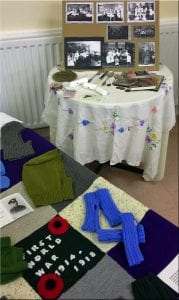 Sewing and costumes – Research and a workshop on WWI outfits for events, lookied at sewing patterns of the day and the knitting patterns the local women of the time used to use for comforts for the troops. We also charity shopped and altered clothes for effect.Fabulous work by the Knit and Natter Group in Middlewich, who not only helped with costumes but made a whole display based on the work of the Red Cross for the October event.
Sewing and costumes – Research and a workshop on WWI outfits for events, lookied at sewing patterns of the day and the knitting patterns the local women of the time used to use for comforts for the troops. We also charity shopped and altered clothes for effect.Fabulous work by the Knit and Natter Group in Middlewich, who not only helped with costumes but made a whole display based on the work of the Red Cross for the October event.
EXAMPLES OF CLOTHING STYLES FOR 1900 – 1920
EXAMPLES OF CLOTHING STYLES FOR EARLY 1900S
GREAT WAR GALLERY
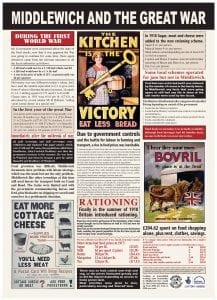 This informative document from Tesco shows how the shortages affected the local population. Household budgets had to to be re-evaluated and this showed in some of the recipes that resulted, examples of which can found in the WWI recipes section.
This informative document from Tesco shows how the shortages affected the local population. Household budgets had to to be re-evaluated and this showed in some of the recipes that resulted, examples of which can found in the WWI recipes section.
The shortage of labour in farming and transport saw people turning to providing their own food but resulted varied from town and ciuntry. Price controls on staple foodstuffs resulted and the government launched a series of propaganda notices about managing food stocks and recipes, that for the first time, altered the way people used various ingredients. Two of our interpretation boards ‘Middlewich & The Great war’ and ‘Agriculture and Horticulture’ show examples of this and how people coped.
Examples of Great War recipes are shown below
GREAT WAR WEEKEND
The Middlewich Town Council Great War heritage event took place on the 4th and 5th October 2014. We challenged the Middlewich community to think of acts of commemoration of the Great War and its era through research, workshops and networking. Documents such as the Roll of Honour, minute books of the schools, MUDC documents, papers relating to families, newspapers and war records of the Red Cross have all been utilised. Middlewich Schools, community groups, churches and residents alike explored and researched this important era and brought it all together for the event.
The images are all of the October weekend itself, we are hoping to collect more, so if you visited us over the weekend and have photographs plus some feedback about what you thought of the event, we’d like to hear from you. Thank you in advance.
The event was supported with commemorative service and parade, contemporary entertainment, re-enactments and period costume worn by entertainers and public alike.
Middlewich Town Council & Middlewich Heritage are highly appreciative of the efforts made by so many people and as the press release below shows, the project goes on way beyond the Great War Weekend:
Mayor’s Parade and Service
INTERPRETATION BOARDS
THE FINISHED INTERPRETATION BOARDS
This section shows the interpretation boards that were on display at the Middlewich and Great War Weekend and formed part of the Winsford Salt Fair through the Towns Partnership between Winsford Town Council and Middlewich Town Council.
For our event we wanted to collect information on how Middlewich Urban District Council dealt with the Great War and the impact that it made on our community. Stories of bravery, ground-breaking discoveries, the hard work on the ‘home front’ and the long-term problems that the war caused for families and employment.
The six ‘main’ boards are the Middlewich view of the war and for this I am very thankful for all the hard work done by local historian Allan Earl for pulling all his research together. Editing these was a joy so forgive me for trying to keep as much information as I could on the boards! Together with designer Irene Inman we sought to keep the design of the WWI newspaper to relate the information.
Many thanks also go to Cheshire Libraries for their help in supplying the local newspapers on micro-film; these again form a good research platform and do contain many images, stories and reports of the local men. Other thanks go to Cheshire Archives and Local Studies for their guidance and access to MUDC documents.
Individual boards were composed in a different way because I wanted the design to stand out more as they were placed at various sites over the weekend and to contain individual information about the waterways, agriculture & horticulture, and food.
The Winsford and Middlewich Boards were a shared venture which explored the ties between our two townships and the effects of the Great War on our shared trades. The townships had been growing from different settlement reasons over different time periods but both became important Market Towns. We share a Salt History and trading background and both built on the idea of using an American Pageant to help to revitalise industries affected by the Great War, here is the story…
AROUND MIDDLEWICH
‘LINDSAY’ ON A MISSION
A special boat was at Canal Terrace ‘Lindsay’ the old working British Waterways narrow-boat came over with her volunteers from the Etruria Boat Group and crafters from the Nimble fingers. ‘Lindsay’ is also on a special mission to raise money to restore the historic sister boat ‘Keppel’.
WEEKEND PHOTOGRAPHS AROUND TOWN
1900S MIDDLEWICH
This section looks at Middlewich in a wider context, what was the town like on the run up to war? The selection of pictures and maps relate to how the town looked from around the 1900’s, the familiar background which was home to the many that served their country.
Middlewich Urban District Council was the local authority in control. Before 1974 and the creation of the Borough Councils, Middlewich U.D.C was largely responsible for the management of the Town. There exists many letters, documents and other primary sources which tell the story of the response to the Great War and its role within it.
Postcards and telegrams were the main routes of communication and highlight the struggles and affections of those involved in the War effort.
During the war there were many newspaper or booklet publications. Some of the publications were in aid of various funds such as the British Red Cross.
A good resource spot for General information and overview of the town at war is via a book ‘Middlewich 1900-1950’ by Allan L Earl.
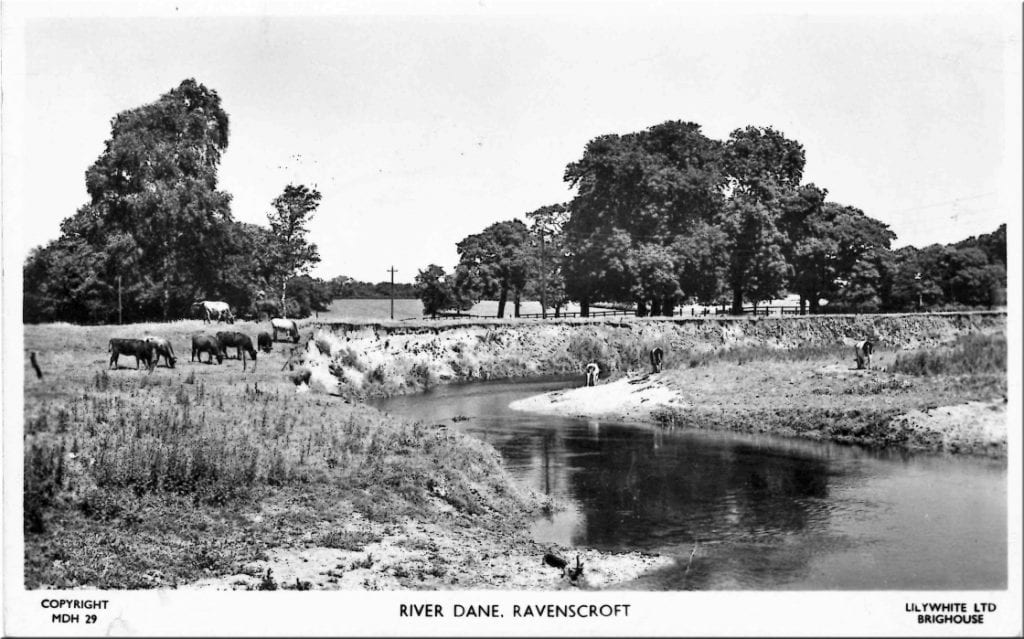

WORLD WAR 1 MEDIA
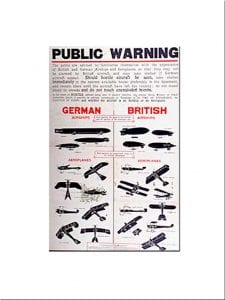

A wide range of topics were covered including public information, recruiting, appeals and news reporting together with a good deal of humour.
POSTCARDS
War Work
- When you come home
- Posters
- Appeals
- Home economy
- Recruitment
THE BATTLE FIELD & NEWSPAPERS
The booklets
- More Fragments from France:
- Boulogne Base Agricultural Show and Fete 1918:
